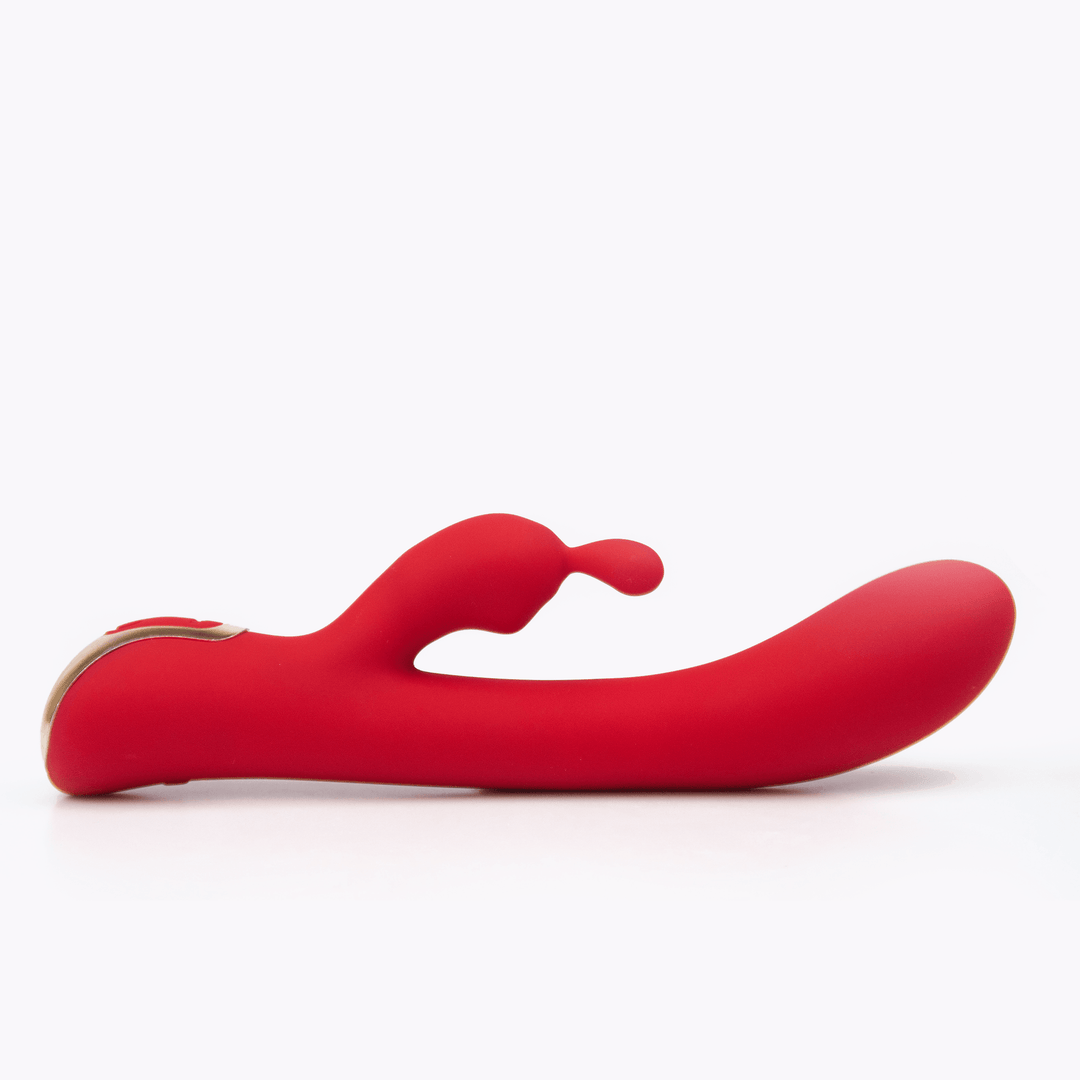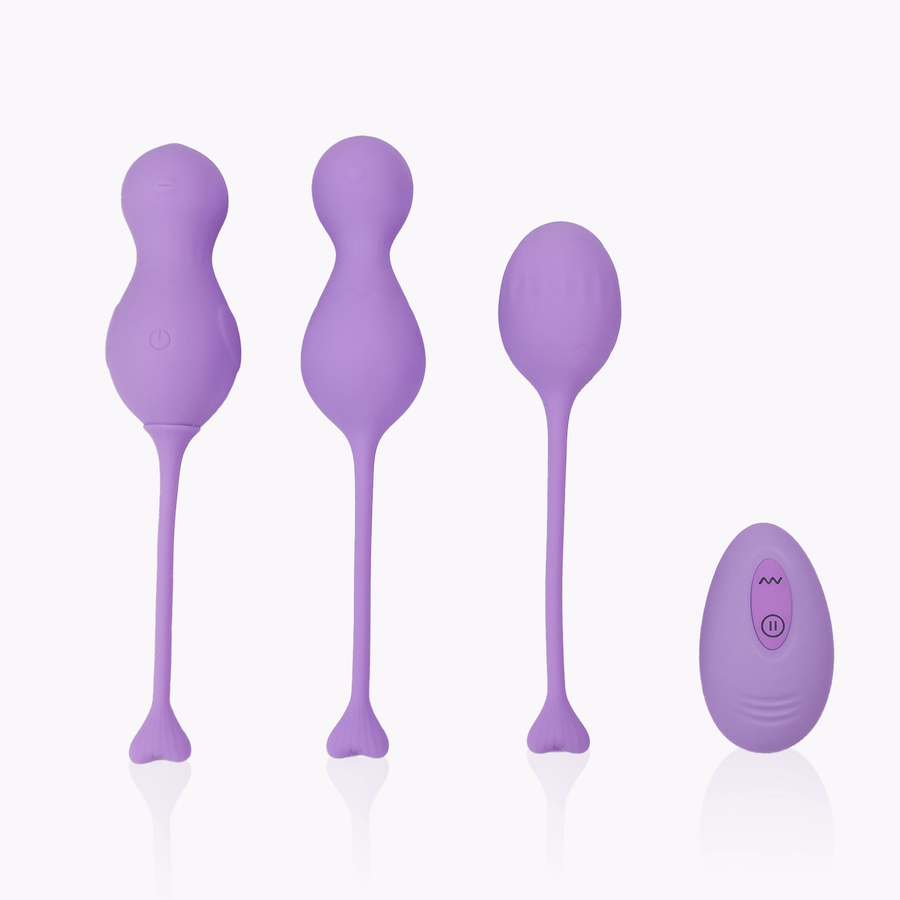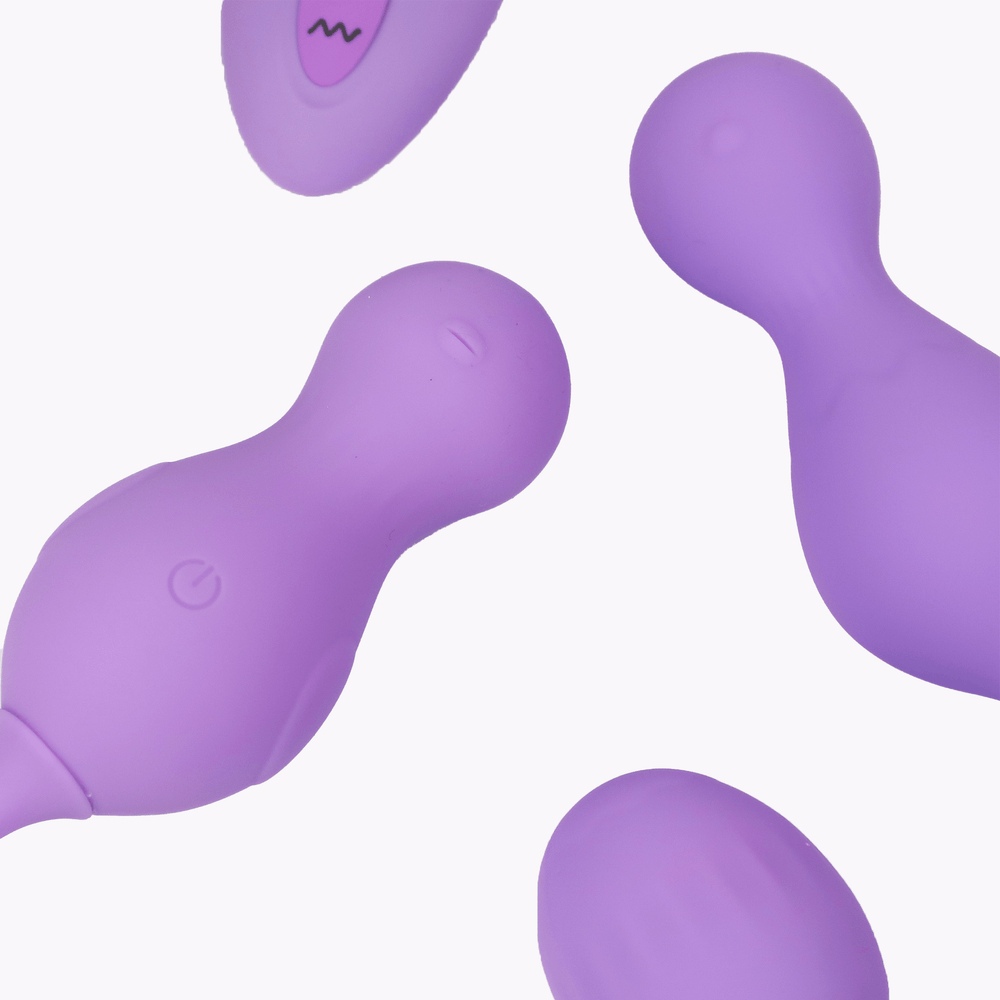What is Kegel Exercise?
Kegel exercise offers a powerful and effective way to develop your pelvic floor muscles. This particular exercise is performed using Ben Wa balls, or more commonly known as Kegel balls.
Various challenges that life brings - the postpartum period, excessive weight gain and the aging process - can have negative effects on your pelvic muscles, creating undesirable conditions and discomfort. Urinary incontinence is just one of these problems and can significantly reduce your quality of life. [1] But there is no need to worry! With Kegel exercises, you can strengthen your pelvic muscles, increase your living standards and make positive contributions to your sexual life. The great thing about Kegel exercises is their confidentiality; You can perform these exercises wherever you want, at home, at work, without anyone noticing. This is a special agreement just between you and your body, and with this agreement you take an important step towards getting stronger.
Brief History
The 1940s were one of the periods when a revolution took place in the medical field and scientific discoveries accelerated. During this period, American gynecologist Arnold Kegel introduced the world to an exercise method that strengthens the pelvic floor muscles and solves urinary incontinence problems, especially in women. This method became known as the eponymous Kegel exercises.
Dr. The main focus of Kegel's work was to enable women to get rid of urinary incontinence problems in natural and effective ways, without surgery. However, research conducted over time has shown that these exercises are extremely beneficial not only for women but also for men who have the same problem. [2]
Dr. This revolutionary approach pioneered by Kegel helps millions of people today improve their quality of life. This exercise method creates positive effects not only on physical health, but also on individuals' self-confidence and life motivation. Dr. This unique contribution of Kegel is considered an important turning point in the history of health and is still successfully practiced by many people.
How to Do Kegel Exercise?
First of all, you need to find the right muscles to work with Kegel exercise. The correct muscle group is the one you feel you are using when trying to hold in urine. These muscles are called pelvic floor muscles.
You should do the Kegel exercise when you do not need to go to the toilet. Once you are sure you feel the right muscle group, you can move on to the exercise. Clean your hands and Kegel balls before starting the exercise. We recommend using Kegel balls with water-based lubricants. After cleaning, apply a few drops of lubricant to your Kegel balls and insert them into your vagina. In order to exercise the correct muscles, you should place Kegel balls 3-5 cm deep into your vagina, not as deep as when using tampons. You should feel comfortable when you insert the Kegel balls, if you feel any discomfort try inserting them again.
Once you place the Kegel balls correctly, you can start your exercise. The exercise is so simple that anyone can do it and it is done as follows:
- Squeeze the Kegel balls with your pelvic ceiling muscles for 3-5 seconds.
- Stop tightening your muscles for 3-5 seconds. The first two steps make 1 loop.
- Perform this cycle 10 times.
Do not tighten your abdominal or leg muscles or lift your hips up during exercise. To make sure you are not tightening your abdominal muscles, you can place your hand on your stomach and check your abdominal muscles. By doing the Kegel exercise 3 times a day for a total of 30-40 cycles, you can feel the results in about 4-6 weeks. Over time, as your pelvic floor muscles develop, you can increase the amount of time you squeeze the Kegel ball. Men can also do the Kegel exercise by exercising the pelvic floor muscle group in a similar way, without using a Kegel ball[2][3].
Benefits of Kegel Exercise
Wide Range of Benefits of Kegel Exercises"
Kegel exercises are a powerful type of exercise that can be performed in just a few minutes, but whose effects are long-lasting. These exercises provide significant benefits in many different areas by strengthening your pelvic floor muscles.
-
Improvement of Sexual Functions : Kegel exercises improve sexual functions in men and women, providing a more satisfying sexual experience. While it improves erection quality in men, it strengthens vaginal sensitivity and orgasm ability in women.
-
Supporting Pelvic Organs : These exercises help prevent pelvic organ prolapse by supporting pelvic organs such as the uterus, bladder and large intestine.
-
Postpartum Recovery : Kegel exercises for women help the pelvic floor muscles recover during the postpartum period, which means a faster recovery process and better pelvic health in the long run.
-
Reducing the Effects of Menopause and Aging : Kegel exercises are effective in reducing natural effects such as weakening of the pelvic muscles in the post-menopausal period and the aging process.
-
Improve Bowel Control : These exercises also increase bowel control, helping to reduce incontinence and other bowel problems.
-
Reducing Pain and Discomfort : Strengthening the pelvic floor muscles can help reduce pain and discomfort in the pelvic area.
-
Better Abdominal and Back Support : Strong pelvic muscles support the abdominal and back area, helping you improve posture and reduce lower back pain.
-
Reducing Stress and Anxiety : Doing Kegel exercise regularly can help reduce stress and anxiety. Since these exercises require mental focus, they relax the mind and promote relaxation.
-
Increased Self-Confidence : Improving your physical health and strengthening your sexual life improves your overall quality of life, which contributes to increased self-confidence.
-
Long-Term Health : Kegel exercises help you maintain your pelvic health long-term, allowing you to live a more active and comfortable life as you age.
All of these benefits are the benefits of doing Kegel exercises regularly. By adding these exercises to your life routine, you can live a healthier and happier life both now and in the coming years.
[1] https://medlineplus.gov/ency/patientinstructions/000141.htm
[2] https://www.health.harvard.edu/bladder-and-bowel/step-by-step-guide-to-performing-kegel-exercises
[4] https://my.clevelandclinic.org/health/articles/14611-kegel-exercises














Leave a comment